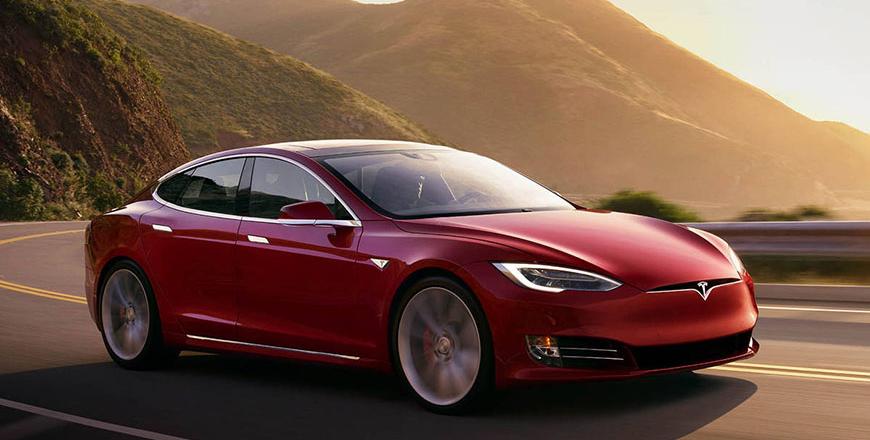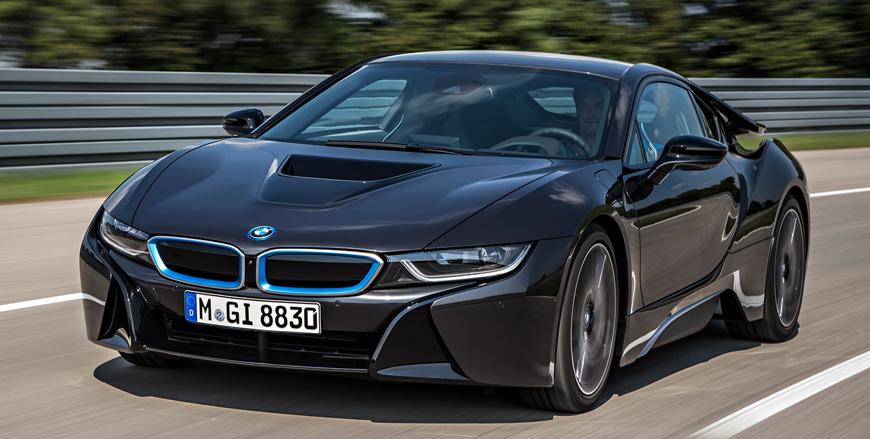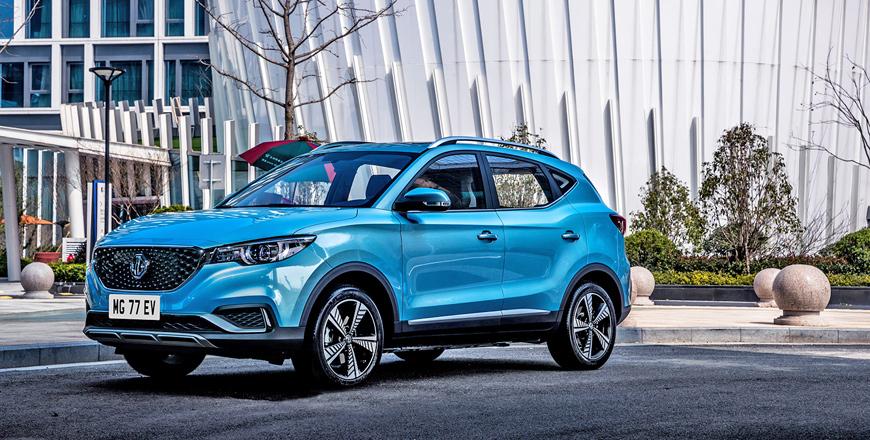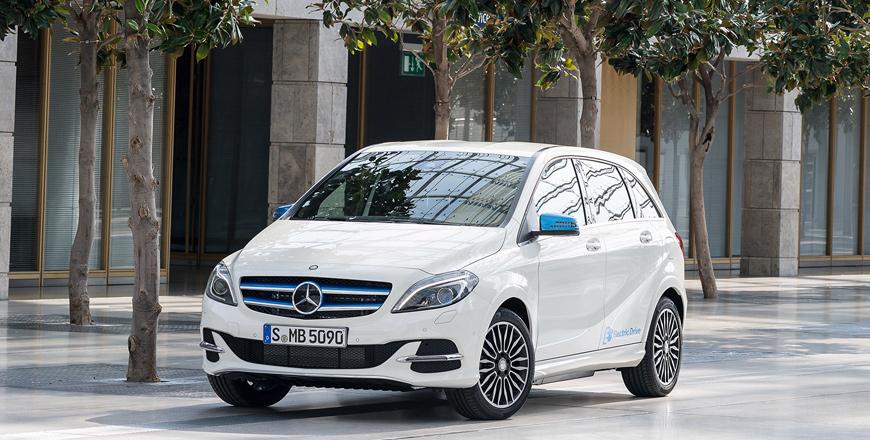You are here
Tesla Model S P100D: Not just simply electric
By Ghaith Madadha - Aug 21,2017 - Last updated at Aug 28,2017

Photo courtesy of Tesla
Officially opening for business in the UAE and to the public in Jordan as of earlier this year, Tesla is, however, not an uncommon sight for Jordanian motorists. Operating in a governmental fleet car capacity in Jordan and in collaboration with the Silicon Valley manufacturer, Tesla is set to become the next big thing on the local motoring landscape.
Benefitting from a comparably favourable import duty and tax regime as electric and hybrid cars do in the Kingdom, greater brand exposure and consumer demand for electric vehicles, not to mention an admittedly small but soon to expand charging station network, the upstart American electric car maker is in relative terms, likely to prove a bigger hit in Jordan.
Dramatic and futuristic
Longest serving of a current three model line stable, the Model S first arrived in 2012, and has been expanding regularly updated in terms of power-train and technology. A large and low all-electric high performance luxury four-door, the Model S competes with an eclectic range of cars, all the way from premium saloons to luxury flagships and high-end supercar exotics in terms of outright acceleration. But with its slinky coupe-like low roofline, body-style and frameless windows, and considerable length and width, the Model S, however, closely resembles so-called ‘four-door-saloons’.
In terms of deign aesthetic, body style and combination of sporting ability and luxurious appointment, the Model S slots in best among the Aston Martin Rapide, Audi A7, Mercedes-Benz CLS-Class and Porsche Panamera.
Lightly redesigned to feature a less conventional front design with only a small slit-style grille to both differentiate it from traditional internal combustion engine cars and further emphasise its futuristic direction, the revised Model S line-up circa 2016 also saw the introduction of the brand’s new P100D flagship variant, as recently driven on Jordanian roads.
Dramatic yet relatively understated for so extreme a car, the P100D differs little aesthetically from the rest of the swooping and stylish Model S range. Not just the most powerful Tesla yet, the Model S P100D ranks heavy hitting and astronomically expensive hypercars as among the world’s fastest accelerating road cars ever, and is arguably the world’s quickest such current regular production car.
Violent yet silent
Built as an electric car from ground up rather than adapted, the Model S features extensive use of lightweight aluminium to offset its dual electric motors’ and large battery pack’s weight, with the latter positioned across its floor to keep major weights low and concentrated within the wheelbase to enhance balance and body control through corners. Tesla’s most powerful battery pack yet at 100kwh, the P100D drives all four wheels through two electric motors with single-speed automatic gearbox. Positioned over the axles, the front motor develops an estimated 259BHP and 277lb/ft torque, and the more powerful rear motor produces 503BHP and 525lb/ft. Meanwhile a regenerative braking system harnesses kinetic energy to help charge the batteries and reduce mechanical brake wear.
In the absence of official published combined, or total, power ratings from Tesla, the Model S P100D has been estimated to produce anywhere from between 680BHP to around 800BHP, but 762BHP seems to be the most often quoted figure. Meanwhile epic and immediate sledgehammer-like torque unofficially rated at 791lb/ft (and in excess of 900lb/ft according to one Motor Trend magazine dynometer test), slams one back into the seat and ensures beguilingly violent but silent acceleration from standstill.
Notable for the sheer surging immediacy of its torque and power output, g-force generated and seamless delivery, the P100D is officially rated as completing the 0-100km/h sprint in just 2.7-seconds. Motor Trend magazine have, however, clocked a 0-97km/h time in under 2.3-seconds, albeit from a rolling start and not absolute standstill.
Aggressive yet efficient
Aggressive, responsive and swift like scant few cars, and with no gear change interruptions, the P100D’s best performance is, however, to be had at relatively lower speed. Overtaking at what seems like warp speeds when one engages Ludicrous mode to access its full potential, the P100D is capable of an electronically limited 250km/h top speed. More than powerful enough in normal driving mode, ludicrous mode increases driveline wear and with increased power, reduces driving range.
Not just one of the world’s fastest accelerating cars, the P100D offers the longest driving range of any regular production electric car, with a combined cycle rating of 507km by the US Environmental Protection Agency (as driven with 21-inch wheels). This can be increased with slower driving and gentler inputs, or significantly reduced with more aggressive driving and higher speed.
Delivering peak performance when its battery is running relatively cool, there is a law of diminished return when one is too aggressive too often in a short space of time. However, with so much brute force available, one hardly notices a drop off, and on launch, the one feels P100D’s always active stability and traction controls scrambling to regular and harness the P100D’s prodigious output into forward motion instead of wheel-spin.
Hefty at 2250kg, the P100D’s large ventilated disc brakes are supplemented with regenerative braking to add an additional and reassuring layer of stopping force that shaves off momentum immediately on lift-off. A less aggressive regenerative brake mode, however, allows for a more fluent driving experience where one doesn’t need to keep riding the accelerator pedal as often.
Seamless delivery
Brutally quick, technologically advanced and smooth, the Models S P100D’s may not be as outright visceral in character as a light and lithe petrol-powered sports car, but in that is not what it is meant to do. Instead, it delivers is a superbly silent and effortlessly versatile driving experience that large luxury cars are meant to.
And in comparison with most hybrid cars, its all-electric drive-line is smoother and more seamlessly fluent than the petrol-electric integration issues often associated with hybrid cars. In terms of practicality, the Model S serves well as a commuter car with its long range, low charging costs, relatively quick recharge times and availability of charging points along the Amman-Aqaba route, but cannot match the quick convenience and availability of refuelling a petrol or diesel vehicle
With a big footprint, aerodynamic form, low centre of gravity and optional adaptive air suspension it rides smooth, reassuring stability and refinement at speed. A comfortable long distance cruiser, the P100D is agile and confident through fast sweeping corners.
Turning in crisply with front wheels gripping hard and its electric-assisted steering providing quick, precise and clinical responses, the P100D’s air suspension provides taut body control. Through corners and over choppy roads, one can almost feel just how low the P100D’s centre of gravity is.
Meanwhile, its adaptive air suspension provides a mostly smooth and comfortable ride, but with a sporty set-up and low profile front 245/35R21 and 265/35R21 rear tyres, can feel on the firm side over bumps at low speed.
High tech luxury
With dual motor four-wheel-drive, and stability systems allocating power front and rear, the P100D provides good grip through corners, but given its immense and instant torque delivery, one should progressively feed power through the accelerator to not lose rear traction when powering out of corners. Effortlessly capable and precise when overtaking and poised through corners, the P100D’s low roof line, vast width and low profile tyres, however, make it tricky to maneuver in narrow and confined spaces.
That said, its bird’s eye view camera, large reversing monitor and parking sensors with precise distance readout in centimetres, help immensely. Also useful to aid visibility is the P100D’s blind spot alert system, which is integrated with its Autopilot system, which in turn was disengaged during test drive.
Luxurious and well appointed with two-tone leather and carbon-fibre trim panels, the P100D is also highly well equipped with luxury, safety and driver-assistance features. With supportive and well-adjustable seats in front, the P100D’s various settings, information, connectivity, entertainment and other features are access through a huge, user-friendly and logical portrait-style 17-inch touchscreen.
Highly refined inside, the Model S is also a practical car with front and rear luggage room for up to 894-litres, 60:40 folding rear seats, adjustable ride height, and optional rear-facing third row child seats with five-point harnesses. Rear legroom and width are good, but for tall adults, rear headroom is less than ideal owing to the rakishly low roofline. Centre console storage is generous, but cup-holders could be better positioned, and a folding rear seat armrest would be welcome.
TECHNICAL SPECIFICATIONS
Engine: Dual front & rear three phase, four pole AC electric motors
Battery: 100kwh lithium-ion
Gearbox: 1-speed automatic
Driveline: four-wheel-drive, open differentials
Axle ratio, F/R: 9.34:1/9.73:1
Power – front motor, BHP (PS) [kW]: 259 (262) [193]*
Power – rear motor, BHP (PS) [kW]: 503 (510) [375]*
Power, combined, BHP (PS) [kW]: 680-762 (690-772) [507-568]*
Torque – front motor, lb/ft (Nm): 277 [375]*
Torque – rear motor, lb/ft (Nm): 525 [712]*
Torque, combined, lb/ft (Nm): 791 (1072)*
0-97km/h: 2.5-seconds
0-100km/h: 2.7-seconds
Top speed: 250km/h
Energy consumption, city/highway: 37/32kW-hrs/160km*
Range, at constant 105km/h, 21-inch wheels: 520km
Range, combined, EPA estimate, 21-inch wheels: 507km
Battery charging time: 6.3-9.5-hours*
Battery charging time, “supercharger”: 75-minutes*
Height: 1417-1460mm*
Width, with mirrors/mirrors folded: 2187/1964mm
Length: 4978mm
Wheelbase: 2960mm
Track, F/R: 1662/1700mm
Ground clearance: 116-160mm
Aerodynamic drag co-efficient: 0.24*
Curb weight: 2250kg*
Weight distribution, F/R; 51:49 per cent*
Headroom, F/R: 986/897mm
Legroom, F/R: 1085/897mm
Shoulder room, F/R: 1466/1397mm
Luggage volume, front and rear: 894-litres
Steering: Electric-assisted rack and pinion
Steering ratio: 14.1:1
Lock-to-lock: 2.3-turns
Suspension, F/R: Double wishbone/multilink, adaptive air dampers
Brakes, F/R: 355mm/365mm ventilated discs, regenerative braking
Tyres, F/R: 245/35R21/265/35R21
*estimates
Related Articles
The first mid-engine BMW since the M1 sports car of 1978, the BMW i8 was first glimpsed as the Vision Efficient Dynamics concept in 2009, be
Formerly used for the then British manufacturer’s sporty compact saloon circa 2001, the ZS nameplate was resurrected for service as the bran
Introduced late 2013 as a 2014 model and phased out as of this year owing to the arrival of a new B-Class model, the Mercedes-Benz B250e Ele



















